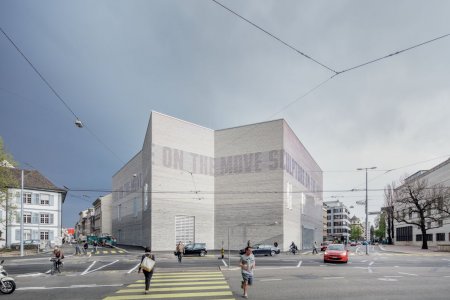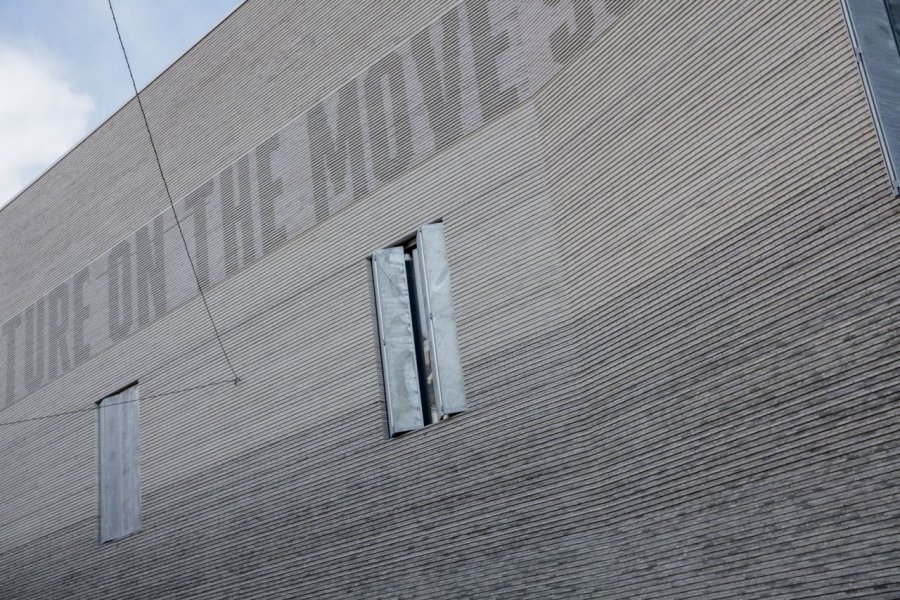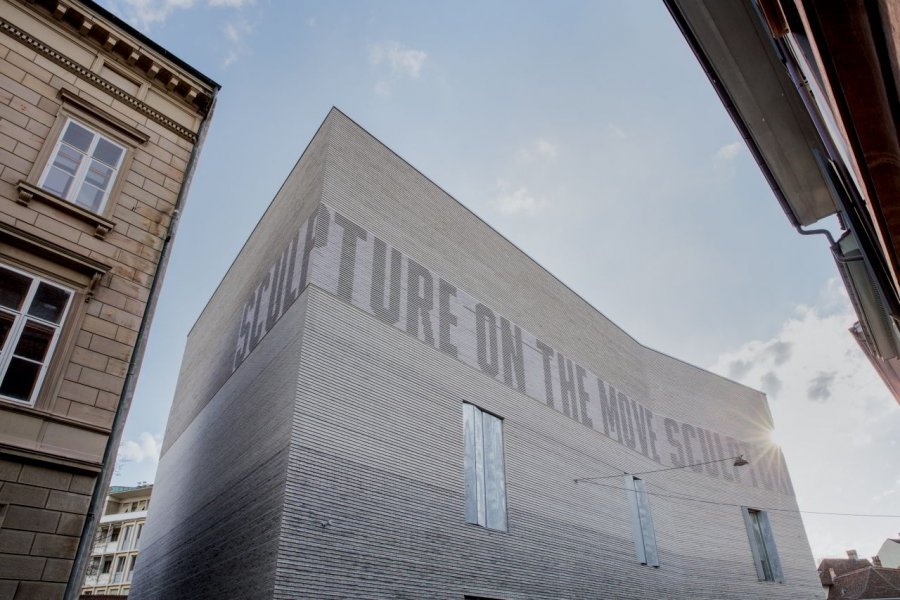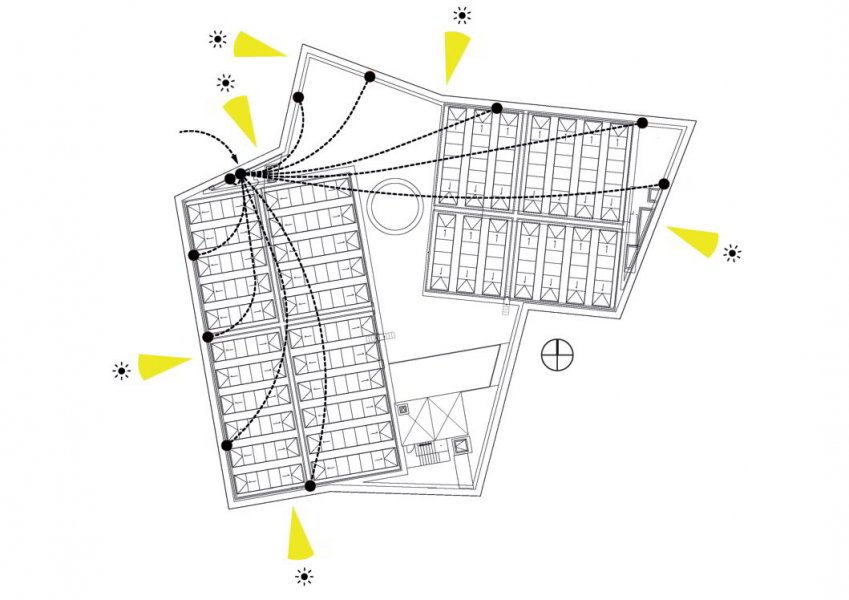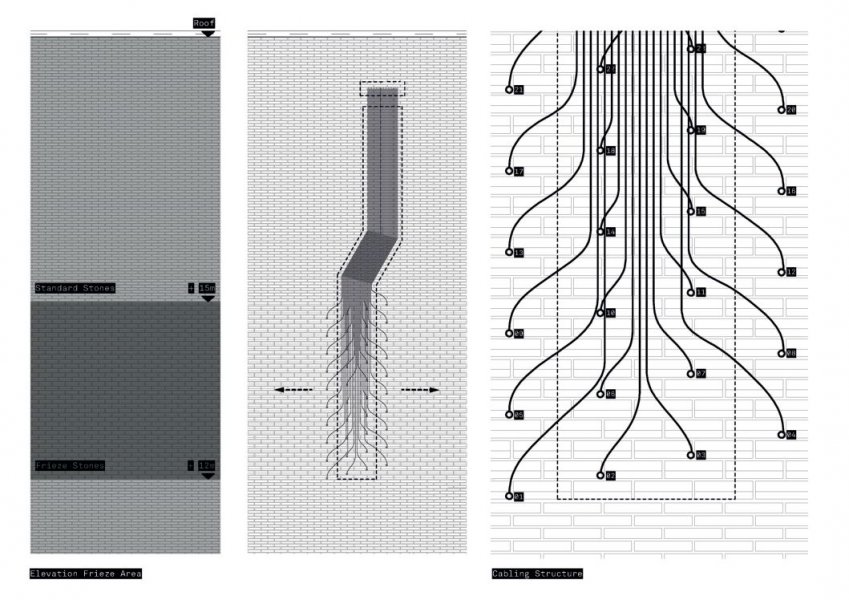The new polygonal-shaped, grey stone building, which contrasts significantly with the existing museum building, is located in the city centre at a large intersection connecting five streets. A true eye-catcher that stands out against the urban backdrop of the Swiss city. That said, at first glance the building envelope comes across as plain and simple as far as form, colour and overall effect are concerned. It certainly stands out, but is simultaneously hugely inconspicuous. It does not immediately give the impression that it is part of a renowned museum and houses works of art and items of cultural heritage. It could be easily be interpreted as something as functional and pragmatic as a multi-storey car park.
The illusion it creates – whatever analogy springs to mind – is the outcome of a finely tuned symbiosis of stone and light, a building envelope featuring cleverly applied materials. Whereas the main section of the facade up to a height of twelve metres comprises classic rectangular grey bricks, above that a special three-metre high frieze encircles the building, whereby a concave groove has been worked lengthwise into the eight- centimetre high bricks. It is these grooves that play a key role for what the frieze is designed to "trigger". The 40 horizontal grooves generate a fine relief across the seven facade segments. White LEDs spaced 22 millimetres apart are mounted in the grooves so they cannot be seen from the street. When the light is reflected by the bricks that make up the frieze the effect is one of soft, diffuse lighting across the façade surface. Each of the horizontal grooves disposes over 1306 pixels, the resulting total resolution thus being 1306 x 40 pixels. The spacing between the individual LEDs is 22 millimetres, whereby groups of four adjacent LEDs define each pixel. The frieze becomes a light frieze, which in turn can be translated into a new form of media facade that not only communicates museum news to the wider public, but is a key design feature of the new museum building.
A museum of world renown therefore succeeds in attracting attention to the art heritage and exhibitions it contains, but also in transporting its "inner workings" to the world at large. But even before the artificial light comes into play, lending itself to creating text and graphics, it is the sunlight over the day that the frieze exploits to an optimum, creating a powerfully poetic play of light and shadow, which changes corresponding to the daylight conditions. At the same time, these daylight effects provide a source of reference with regard to the luminous intensity of the LEDs integrated into the facade. Sensors on the roof of the building determine the amount of light that falls on each of the individual segments of the facade in order to control the brightness of the LEDs. The result is a "shadow display" comprising an even flow of text or graphics that is not dependent on incident sunlight, but is also legible over the course of the day. Using the facade as a surface for subtle, aesthetic displays gives the onlooker the impression it is sometimes more transparent than others. The inside of the building appears to be interacting with the outside. The brighter the LEDs
become as dusk descends, the more diaphanous the structured light grey masonry seems to be. As long as there is sufficient daylight available the elements in the display are represented by darker pixels – the frieze takes the form of a negative display, and scenes depicted as if they have been incorporated into or painted on the brickwork. After dark this switches to a positive display, and the overall effect is much brighter. The motifs are depicted by lighter pixels, giving rise to the impression that you can actually see inside the building. The colour temperature of the LEDs was carefully chosen: the designers agreed on warm white to bring out the warmth of the grey stone. The architects have created a modern piece of architecture and the light frieze design by the iArt team has become an integral part of the entire project. Brick, which was selected to build the facade, was an important building material thousands of years ago. The same applies to the frieze feature, which has also been used on significant buildings to structure and provide ornamentation to facades. Both components have been convincingly transported into the present – combined and expanded to a significant degree through light.
While natural light lends the facade texture and basically maintains its important and powerful role, the intelligent application of the concealed LEDs enables the facade to communicate with its surroundings. It becomes a media facade without showing the slightest signs of being such. It is all about the exemplary interplay of natural light and artificial light. The light brings the architecture to life: the symbiosis of stone and light coupled with the technically, highly sophisticated overall concept developed thanks to the meticulous collaboration between all the architects and designers, have given rise to a remarkable milestone project. The rhythm of museum life, the activities going on inside the museum are reflected on its outer facade surfaces, leaving their mark literally by means of light. The Kunstmuseum in Basel demonstrates clearly that weaving state-of-the- art lighting technology into the facade of a building need not be flashy, colourful or superimposed, but an integral, harmonious part of the end result.
Project team:
Client: Department for Construction and Transport Basel-City, Urban Development and Architecture, Building Department Architecture: Christ & Gantenbein
Execution:
Peter Stocker AG Baumanagement Construction management:
FS Architekten GmbH
Lighting design light frieze: iart ag
Products applied:
SMD LEDs (6000K), mounted on flat profiles
